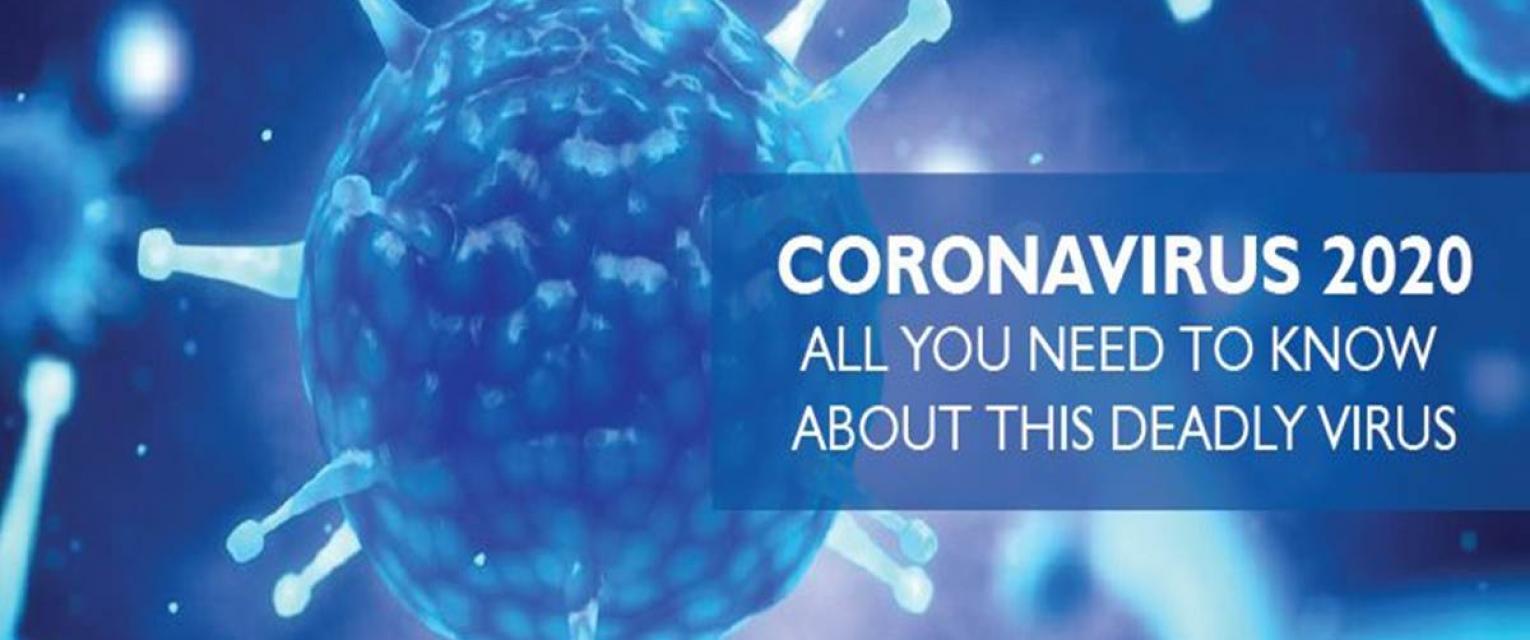There are so many diseases in the world but the one that has got everyone terrified currently is the deadly new virus – COVID-19 aka the Coronavirus.

The first question that arises in everyone’s mind is – what is Coronavirus?
According to World Health Organization (WHO), Coronaviruses (CoV) are a large family of viruses that cause illness ranging from the common cold to more severe diseases such as Middle East Respiratory Syndrome (MERS-CoV) and Severe Acute Respiratory Syndrome (SARS-CoV).
Coronavirus disease (COVID-19) is a new strain that was discovered in 2019 which was previously not identified in humans.
How does Coronavirus spread?
Like cold and flu, the virus is spread via droplets when a person coughs or sneezes. The droplets land on surfaces and are picked up on the hands of others and spread further. People catch the virus when they touch their infected hands to their mouth, nose or eyes.
It follows that the single most important thing you can do to protect yourself is to keep your hands clean by washing them frequently with soap and water or a hand sanitizing gel.
Who started the Coronavirus?
Various crazy conspiracy theories have been circulating that the virus somehow escaped from a Chinese lab, either by accident or design. However, this is categorically untrue and scientists studying its genetic code have linked it to bats. It probably then jumped to another animal, which passed it on to humans.

The number of diseases crossing from animals to humans is growing, and teams of virus hunters are tracking them down.
How did the outbreak start?
The source of the Coronavirus is believed to be a “wet market” in Wuhan, which sold both dead and live animals including fish and birds.
Such markets pose a heightened risk of viruses jumping from animals to humans because hygiene standards are difficult to maintain if live animals are being kept and butchered on-site. Typically, they are also densely packed.
The animal source of the latest outbreak has not yet been identified, but the original host is thought to be bats. Bats were not sold at the Wuhan market but may have infected live chickens or other animals sold there.
Bats are host to a wide range of zoonotic viruses including Ebola, HIV and rabies.
Could the outbreak grow bigger?
It is impossible to say which way the virus will go but, on its current trajectory, it is likely to spread to more countries, affecting many more people. The number of cases is beginning to decrease in China but is climbing in the rest of the world.

What are the symptoms of Coronavirus?
Initial symptoms include fever, dry cough, tiredness and a general feeling of being unwell.
How many people have died from the disease so far?
More than 167,000 cases have been confirmed since the outbreak started. The death toll has exceeded over 6,400. The vast majority of cases are in China and Italy, but the virus has spread to more than 100 other countries.

According to data from the Chinese authorities, around 80 percent of cases of the disease are mild, but 20 percent require hospitalization.
Let us have a look at some facts which the World Health Organisation shares and are essential for one to know about the Coronavirus Disease 2019:
1. Diseases can make anyone sick regardless of their race or ethnicity.
Fear and anxiety about COVID-19 can cause people to avoid or reject others even though they are not at risk of spreading the virus.
2. For most people, the immediate risk of becoming seriously ill from the virus that causes COVID-19 is thought to below.
Older adults and people of any age with underlying health conditions, such as diabetes, lung disease, or heart disease, are at greater risk of severe illness from COVID-19.
3. Someone who has completed quarantine or has been released from isolation does not pose a risk of infection to other people.
4. There are simple things you can do to help keep yourself and others healthy.
– Wash your hands often with soap and water for at least 20 seconds, especially after blowing your nose, coughing, or sneezing; going to the bathroom; and before eating or preparing food.
– Avoid touching your eyes, nose, and mouth with unwashed hands.
– Stay home when you are sick.
– Cover your cough or sneeze with a tissue, then throw the tissue in the trash.

5. You can help stop COVID-19 by knowing the signs and symptoms:
– Fever
– Cough
– Shortness of breath
– Seek medical advice if you develop symptoms: Have been in close contact with a person known to have COVID-19 or live in or have recently traveled from an area with ongoing spread of COVID-19. Call ahead before you go to a doctor’s office or emergency room. Tell them about your recent travel and your symptoms.
Is there anything I should be doing to prepare?
Yes – there are plenty of basic precautions you can take to protect yourself against catching respiratory viruses of this type.


